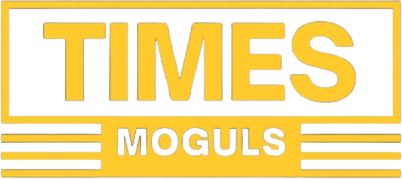
An expanded stent physically opens a blocked blood vessel, but interactions between the metal surface and vascular cells can either promote healing or cause adverse effects. Credit: Korea Institute of Science and Technology
A research team from the Korea Institute of Science and Technology (KIST) has developed a new technology for stent surface treatment using laser patterning. This technology promotes the growth of endothelial cells while inhibiting the dedifferentiation of smooth muscle cells in blood vessels.
The paper is published in the magazine Bioactive materials.
By controlling cellular responses With nanostructured patterns, the technique holds promise for improving vascular recovery, particularly when combined with chemical coating methods.
As South Korea moves toward a very elderly society, the incidence of vascular diseases among the population elderly population increases, thus increasing the importance of therapeutic stents. These tubular medical devices maintain blood flow by expanding, constricting or blocking. blood vessels. However, traditional metal stents can cause restenosis (further narrowing of the artery) due to excessive proliferation of smooth muscle cells one month after implantation.
Drug-eluting stents are widely used to alleviate this problem, but often inhibit vascular re-endothelialization, thereby increasing the risk of thrombosis and requiring the use of anticoagulants. To overcome these limitations, research is underway into coating stent surfaces with bioactive molecules such as proteins or nucleic acids. However, these coatings often serve limited functions and fail to accelerate endothelial cell proliferation.
To solve this problem, the research team led by Dr. Hojeong Jeon and Dr. Hyung-Seop Han from the KIST Biomaterials Research Center, together with Dr. Indong Jun from KIST Europe, applied laser texturing technology nanosecond to create large-scale nano- and micro-wrinkle patterns on nickel-titanium alloy surfaces.
Wrinkle patterns inhibit the migration and morphological changes of smooth muscle cells caused by stent-induced vessel wall injury, thereby preventing restenosis. Wrinkle patterns also improve cell adhesion, promoting re-endothelialization to restore vascular lining.
-

When a laser with a wavelength of 1064 nm, a pulse width of 4 ns, and a repetition rate of 800 kHz is applied to a medical grade metal surface at a speed of 0 .5 m/s, surface structures with wrinkles ranging from nanometer to micrometer can be created, depending on the number of pulses. Credit: Korea Institute of Science and Technology
-

Nanosecond laser texturing conditions enable control of nano/microstructures on metal surfaces, thereby enabling regulation of interactions between conventional metal stents and vascular constituent cells. This promotes neovascularization. Credit: Korea Institute of Science and Technology
The team validated the effectiveness of this technology through in vitro vascular cell studies and ex vivo angiogenesis assays using fetal animal bones. Laser-textured metal surfaces created favorable environments for endothelial cell proliferation while effectively suppressing dedifferentiation and excessive growth of smooth muscle cells.
Notably, smooth muscle cell growth on wrinkled surfaces was reduced by approximately 75%, while angiogenesis more than doubled.
Surface patterning technology is expected to be applicable not only to metallic stents but also to biodegradable stents. When applied to biodegradable stents, these designs can prevent restenosis and improve endothelialization before the stents dissolve, thereby improving treatment outcomes and reducing the risk of complications.
The research team plans to conduct animal tests and clinical trials to verify the long-term safety and effectiveness of this laser structuring technology.
Dr Jeon said: “This study demonstrates the potential of surface patterns to selectively control vascular cell responses without drugs. The use of widely industrialized nanosecond lasers enables precise and rapid treatment of the stent surface, providing significant advantages in terms of commercialization and process efficiency.
More information:
Indong Jun et al, Exploring the potential of laser-textured metal alloys: fine-tuning vascular cell responses through in vitro and ex vivo analyses, Bioactive materials (2024). DOI: 10.1016/j.bioactmat.2024.09.019
Provided by
National Science and Technology Research Council
Quote: New laser technology improves the effectiveness of stents in vascular treatments (December 27, 2024) retrieved December 27, 2024 from https://medicalxpress.com/news/2024-12-laser-technology-stent-effectness-vascular. html
This document is subject to copyright. Except for fair use for private study or research purposes, no part may be reproduced without written permission. The content is provided for informational purposes only.




